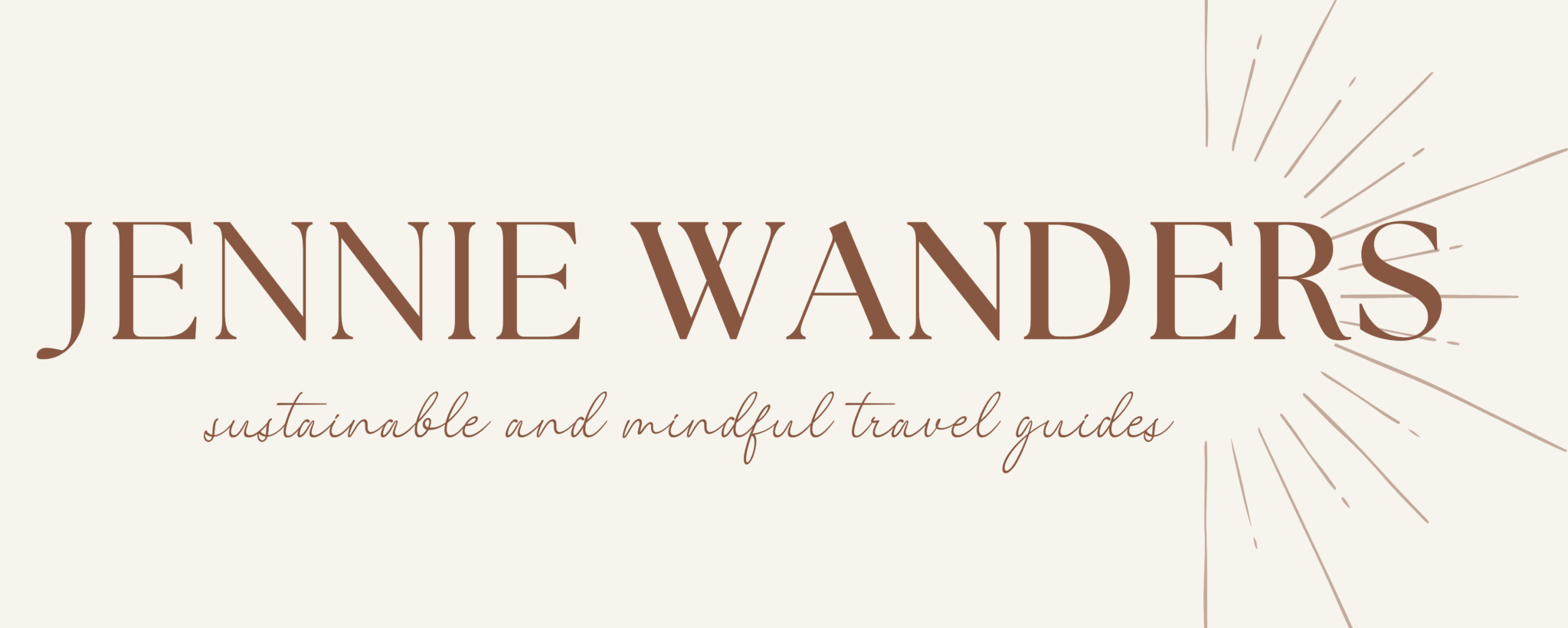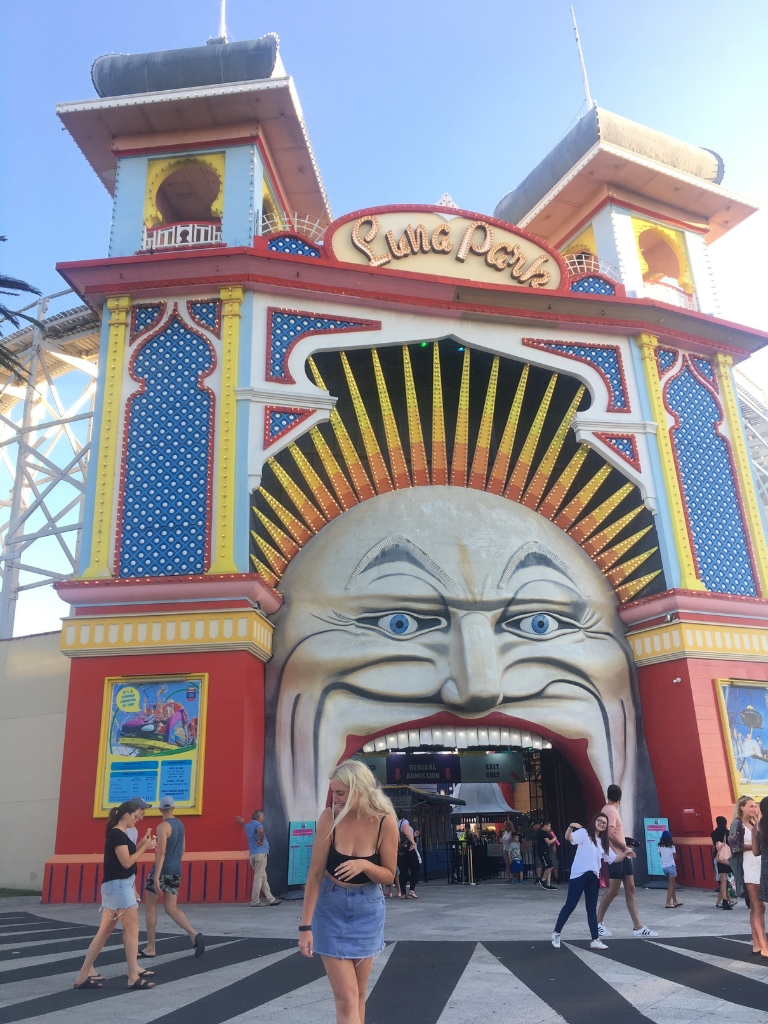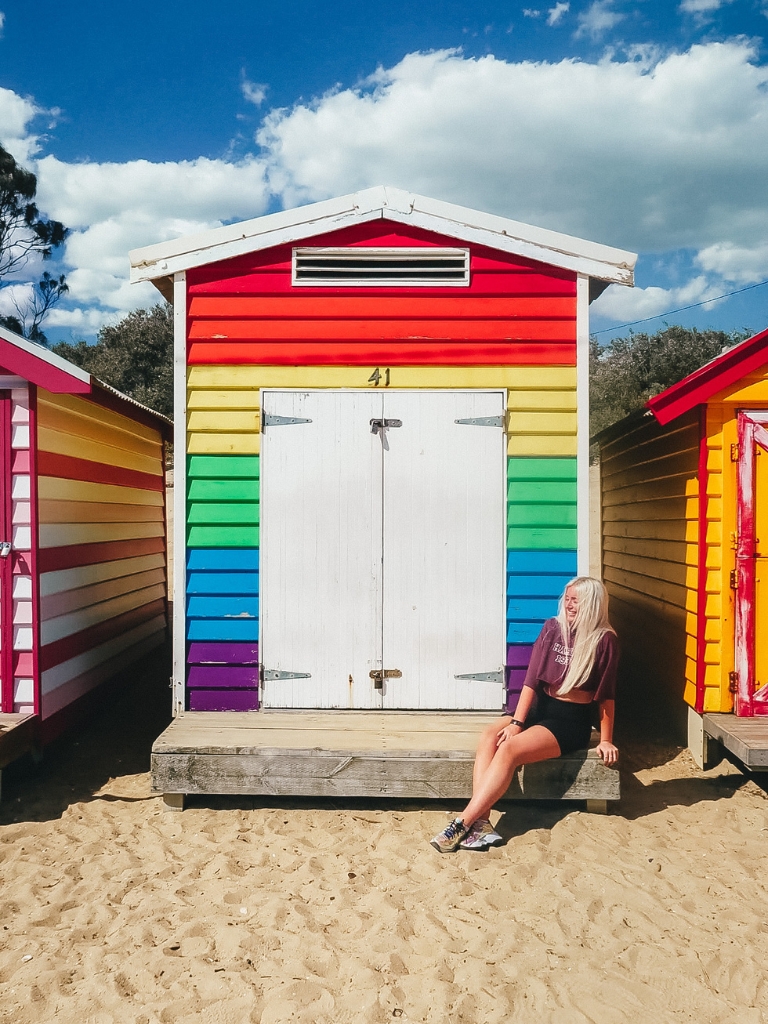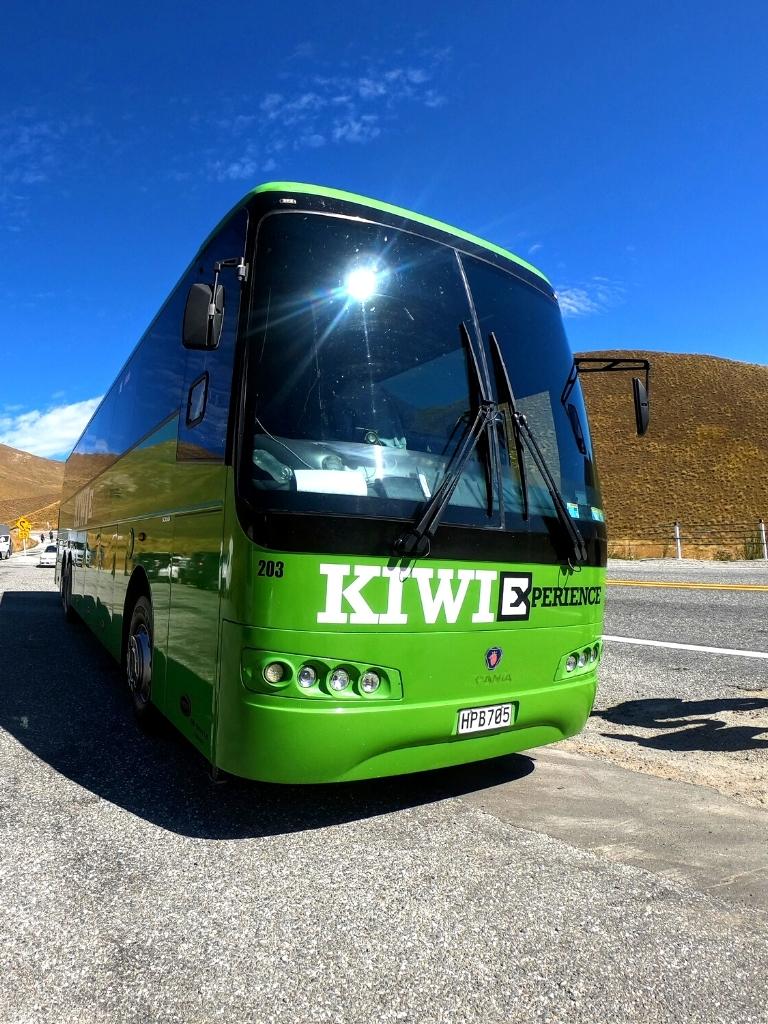Best Places to Live in Melbourne as a Young Adult or Expat
Looking for the best places to live in Melbourne? Every Melbourne suburb has something different to offer, and it’s important you find a place that suits you.
Before we moved to Australia in 2018, we didn’t know anything about the areas in Melbourne. We didn’t even really know whether we’d prefer Melbourne or Sydney (check out my in-depth analysis of which one you should choose here).
But I did know I wanted to be somewhere that had a fun and lively atmosphere, had good city connections and was a good base for both domestic and international travel. Ideally, we’d live somewhere near the beach and would have a good choice of restaurants, bars and cafes.
What you need out of an area in Melbourne is personal. Ideally, it’s best to visit some areas in Melbourne before you make a decision. Neighbourhoods in Melbourne are diverse, some you may like, and some you may not.
In the following post, I delve into everything you need to look for when deciding where to live in Melbourne. As a UK expat myself, this post is written from the view of someone doing their working holiday visa in Australia.
🤔 Related post: If you’re moving to Melbourne on a working holiday visa, check out my detailed guide about the costs of living, how to make friends, how to get a job and what living in Melbourne is actually like.
Other Melbourne posts:
- 10 Fun Things To Do in Melbourne Solo (+ 20 Extras!)
- Living in Melbourne as an Expat: Complete Guide on Moving to Melbourne
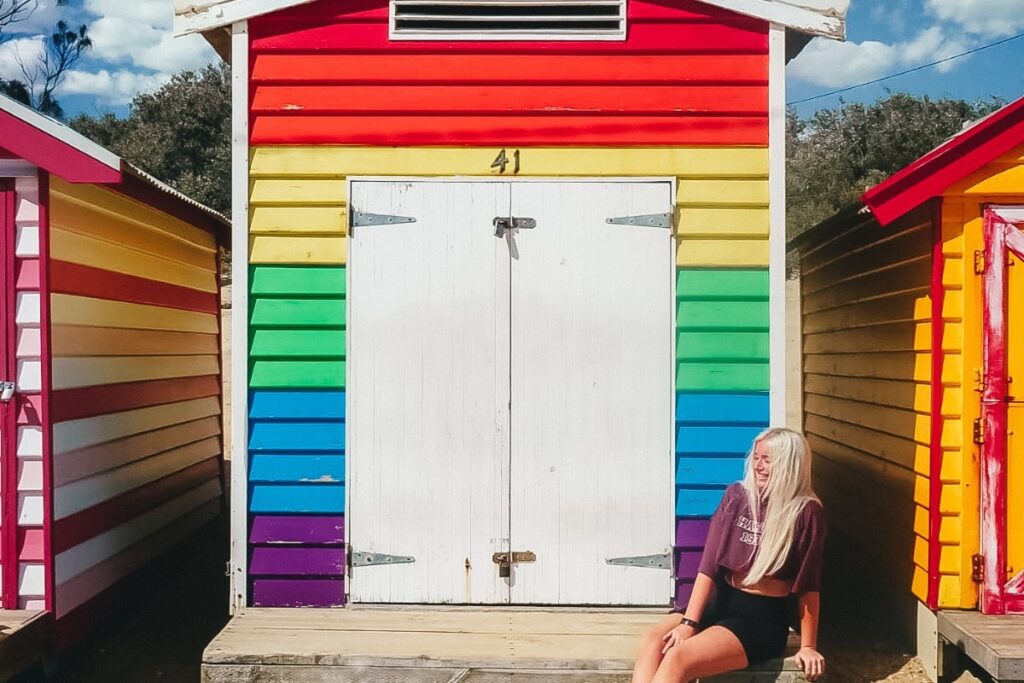
Best Places to Live in Melbourne: A Summary
If you Google the most liveable cities in the world, Melbourne often comes out on top.
Melbourne is known for its laid-back way of life. It’s live music and art scene, quirky coffee shops, vintage markets, and crazy nightlife. It’s chaotic yet wholesome at the same time. A city where you can experience a 24-hour nightclub and the next evening sit on a pier eating ice cream whilst watching the penguins retreat for the evening.
If you’re looking for an area to live in Melbourne, it’s good to know that all neighbourhoods are well connected. The most popular form of transport in Melbourne is the tram, which runs all over the city. When renting or buying, be sure to check the transportation links and tram stops nearby.
In summary, the most popular areas to live in Melbourne as an expat or someone on a working holiday visa are:
- St Kilda
- Chapel Street (Prahran, South Yarra, Richmond, Windsor)
- Brunswick
- The CBD/Southbank
- Fitzroy
You’ll often hear locals refer to Melbourne areas as ‘sides of the river’. In this case, St Kilda and Chapel Street are south of the river, whilst the CBD, Brunswick and Fitzroy are north of the river. There’s a small rivalry (on which side is better) and those who live north say they’ll never live south, and vice versa.
Regardless of whether you want to live north or south of the river (I mean, it really doesn’t matter), neighbourhoods in Melbourne are diverse. And if you want to be near the beach, you’re going to need to pick a south-side neighbourhood.
🇦🇺 Related post: If you’re moving to Melbourne on a working holiday visa, check out my detailed guide about the costs of living, how to make friends, how to get a job and what living in Melbourne is actually like.
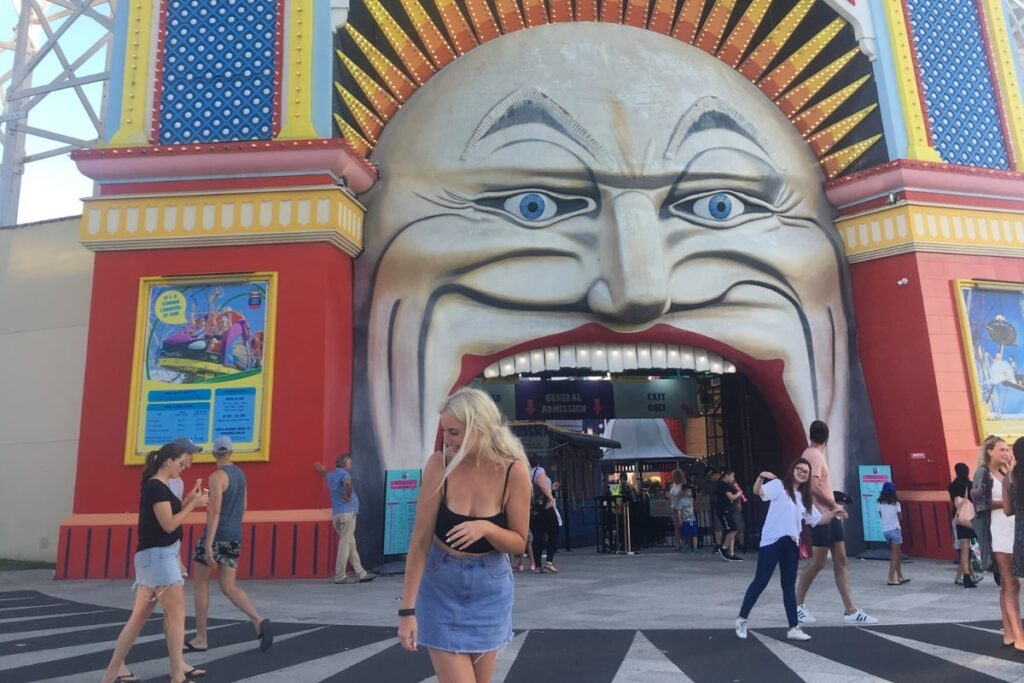
Where to stay when arriving in Melbourne
When you first arrive in Melbourne, don’t rush into renting an apartment immediately. Unless you are 100% sure about an area (if you already have friends there or strong recommendations), I recommend spending some time in different areas. If you’re backpacking, the best way to do this is in hostels.
If you’re looking for the best hostels in the areas listed, here are some of our favourites.
St Kilda and Chapel Street: Nomads Hostel
The CBD: Space Hostel
Brunswick: Landing Pads Hostel
Fitzroy: The Nunnery
For couples and groups in the CBD: The Fawkner Apartments
For couples in St Kilda: Blessington Street Studio Apartments
We started our trip in St Kilda, and even after spending time in both Brunswick and the CBD, found that St Kilda was the best area for us. For the first eight weeks of our stay in Melbourne, we stayed in hostels.
You will meet plenty of other backpackers and expats who are completing their working holiday visas in hostels. Even though we stayed in the party hostel of Nomads, we would socialise in the evenings and get up for work early the next day. It was part of the experience!
🇦🇺 Related post: Detailed Guide on Moving to Melbourne on a Working Holiday Visa – finding a job, making friends, where to party, best restaurants and more!
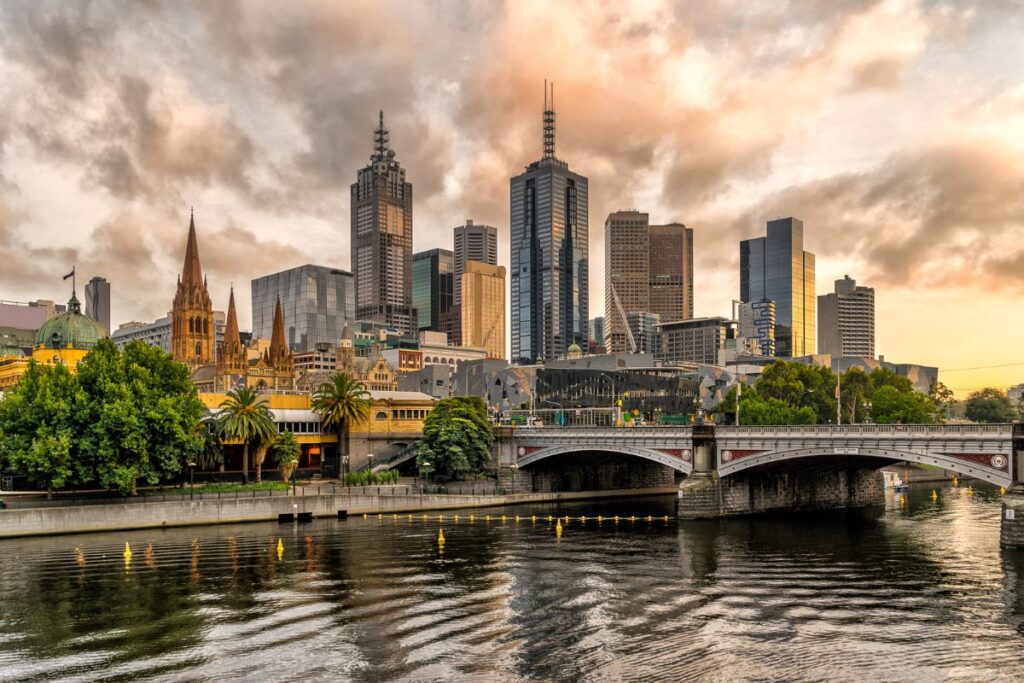
Melbourne Area Guide: Best Areas for Expats and Young Adults
1. St Kilda
🙋🏼♀️ Perfect for backpackers, young adults, couples and those who want to be in a lively area near a beach.
🚋 St Kilda is great for transport links around the city, and the 96, 33 or 16 tram will take you under 30 minutes to reach the CBD.
☀️ Closest beach: St Kilda, but Brighton Beach is a short journey away
🕺🏼🪩 Party: Lona, Veludos, The Fifth (☘️ Irish Bar), Village Bell
✅ Safe, friendly and has large green spaces with easy access to the beach
St Kilda is one of the most popular areas to settle in Melbourne for British backpackers. If you’re doing a working holiday visa (WHV) and you’re from the UK, chances are, you’ll meet quite a few other people from the same area as you in St Kilda.
Some people love this, some people hate it. If you’d rather meet Australian locals, St Kilda isn’t the place for you. We had many, many friends in St Kilda, but none of them were Aussie! Our Australian friends lived in other areas around the city, and all of our British WHV friends lived in St Kilda.
But if you are happy to settle in with other British and European backpackers, St Kilda is an amazing area to live in Melbourne. For us, it was undoubtedly ‘home’ from the start of our trip, right until the end. It still holds a special place in my heart, and will be somewhere I’ll return to for the rest of my life.
St Kilda is located south of the River Yarra, just 6km from the city centre. It’s well connected, and takes just 30 minutes to reach Melbourne’s CBD by tram. It’s home to a large, sandy beach, where many festivals and live music events take place. Nightlife is lively, fun and energetic, and you can expect bars to have live saxophone players, bands and daily events.
The main street in St Kilda is Acland Street. If you’re staying at the Nomads, Acland Street is a thirty-second walk away. This street is full of bars, clubs restaurants, cake shops, pubs, supermarkets, high-street stores and cafes, and has the well-connected number 96 tram stop (which goes directly to the CBD). It’s the perfect street for any backpacker or tourist in Melbourne.
From the Nomads Hostel and Acland Street, it’s a straightforward five-minute walk to the beach. St Kilda Beach is beautiful, and you can even sit and watch penguins waddle in at dusk from the pier. There are also large green spaces to sit and have a picnic overlooking the sea, as well as public beach BBQs for anyone to use.
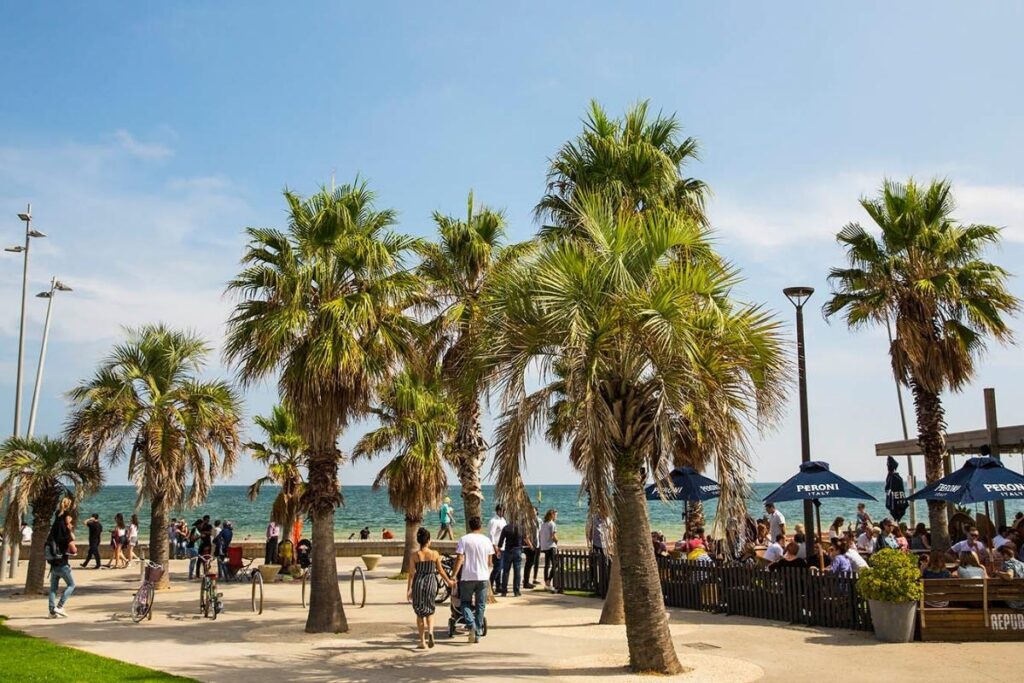
2. Chapel Street (Prahran, South Yarra, Richmond, Windsor)
🙋🏼♀️ Perfect for backpackers, young adults, couples and those who want to be in an area near the best nightlife in Melbourne.
🚋 Chapel Street is great for transport links around the city, with trams to Flinders Street and Southern Cross. There are also multiple train stations. The 78/72 tram is a quick and easy way to Melbourne’s CBD via Chapel Street and takes around 20 minutes.
☀️ Closest beach: St Kilda, but Brighton Beach is a short journey away
🕺🏼🪩 Party: Revolver, Lucky Coq, Three Monkeys, The Woods of Windsor, Bridie O’Reilly’s (☘️), College Lawn, Poof Doof, Pawn & Co
✅ Safe, fun and is a more residential area of Melbourne
Chapel Street is another popular area in Melbourne for backpackers and those on a working holiday visa to settle. There are multiple areas around Chapel Street that are within walking distance (Prahran, South Yarra, Richmond, Windsor). They are all well-connected, safe and nice areas to live in Melbourne.
Chapel Street is less than ten minutes by Uber from St Kilda, so if you do decide to settle in either St Kilda or Chapel Street, you can travel often between the two.
The street itself is over 5km long, and is home to regular high-street shops and malls, hairdressers, doctors, dentists, supermarkets, bars, cafes, restaurants and of course, nightclubs.
Chapel Street is known for having the best nightlife in Melbourne, with a 24-hour club that opens four days a week (you don’t want to miss it, it’s called Revolver).
If that’s not your scene, there are plenty of pubs, low-key bars and even speakeasies on Chapel Street. Some are well-hidden, and you may need to climb through a fridge or find somewhere a little extra to reach some of the best cocktail bars on the street!
3. Brunswick
🙋🏼♀️ Perfect for young adults and an alternative crowd as Brunswick is known as a destination for live music, a lively art scene and fashion markets.
🚋 Brunswick to the CBD is a 15-minute journey on the 1, 6 or 19 tram.
☀️ Closest beach: St Kilda, Brighton and Elwood
🕺🏼🪩 Party: The Brunswick Ballroom, Howler, The Retreat Hotel
✅ Safe, multicultural, both locals and backpackers
A little further from the beaches of Melbourne, our first ‘north of the river’ location is Brunswick. Brunswick has a distinct ‘edgy’ feel to it, and it reminded me of locations like Shoreditch and Hoxton in East London.
Brunswick is a great location to settle in Melbourne if you would like to immerse yourself with both locals and backpackers. It’s full of quirky cafes, alternative clothes markets, vintage stores, rooftop bars and aesthetic coffee shops.
Then there’s the food in Brunswick! Some of the best food we ate in Melbourne was in this area. Expect multicultural influences, with restaurants serving Greek, Italian, American, Lebanese and Middle Eastern dishes.
Again, Brunswick is well connected, so even if you’re living in a different area in Melbourne, it can be easily reached within the hour.
4. The CBD/Southbank
🙋🏼♀️ Perfect for those working in the CBD, and want to be heart of the city
🚋 Connections to every area in Melbourne, including the suburbs
☀️ Closest beach: St Kilda, Brighton and Elwood
🕺🏼🪩 Party: Union, Goldilocks, Loop, Rooftop, Gogo, Garden State Hotel
✅ Safe, multicultural, both locals and backpackers, with a more corporate atmosphere than other areas on the list
The CBD (Central Business District) is the ‘beating heart’ of the city and is the capital of the state of Victoria. Situated on the Yarra River, the CBD is a multicultural hub of bars, restaurants, cafes, green spaces and cultural centres.
The CBD is home to some of the most important historical architecture in Melbourne, including the Shrine of Remembrance, Federation Square and the Melbourne Arts Precinct.
If you’re going to live in the CBD, there are many modern and trendy high-rise apartments, but at a much higher cost than living in some of the outer areas. Unsurprisingly, not many backpackers can afford to live in the CBD, but it’s a great place to live if you can afford it.
🛌 Need a hostel in Melbourne’s CBD? I recommend Space Hostel to immerse yourself in the CBD atmosphere and meet like-minded travellers!
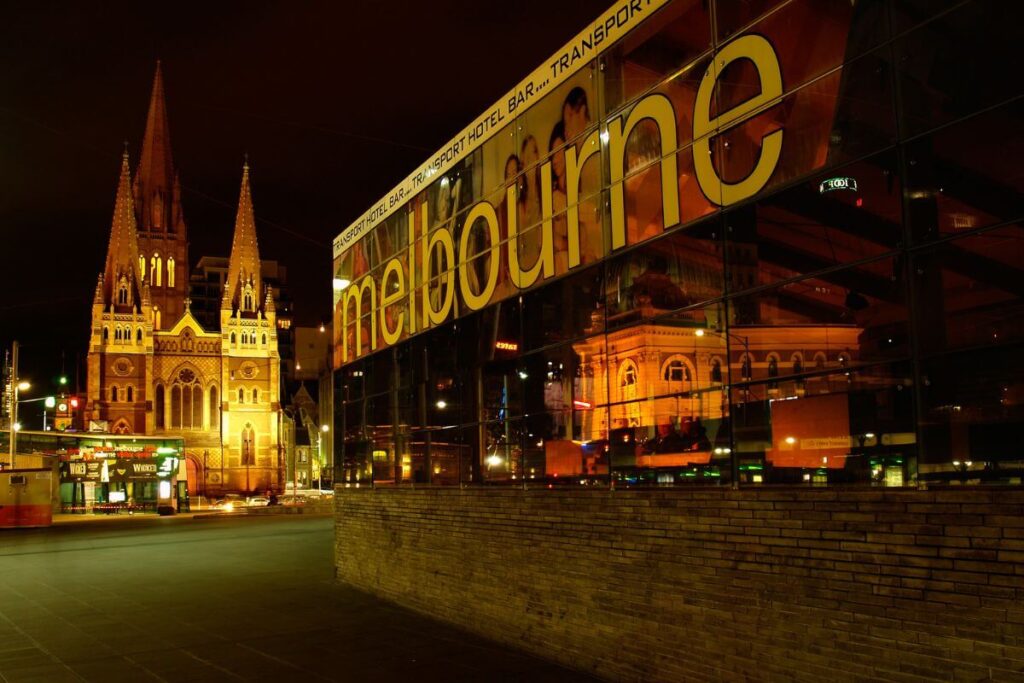
5. Fitzroy
🙋🏼♀️ Perfect for backpackers, students, weekenders and young professionals
🚋 Great transport links with the number 11 or 96 tram
☀️ Closest beach: St Kilda, Brighton and Elwood
🕺🏼🪩 Party: Bar Open, The Rooks, Black Pearl, Tamura Sake, The Shady Lady, Ends & Means.
✅ Safe, lots of things to do. Various ages, backgrounds and cultures call Fitzroy home.
Often referred to as an ‘eclectic’ area of Melbourne, Fitzroy is a great neighbourhood for backpackers, students, weekenders and young professionals. With narrow streets and terrace houses, Fitzroy is home to a number of pubs, gay bars, bars, restaurants and vintage markets.
It’s the perfect mix of both residential suburban life and edgy, fun and sophisticated nightlife. Expect large Victorian buildings mixed with modern apartments and bars, street art painted on spare walls and unconventional art exhibitions.
Known as a place where ‘anything goes’, it’s a great area in Melbourne for those who want a laidback, quirky lifestyle.
🇦🇺 Related post: If you’re moving to Melbourne on a working holiday visa, check out my detailed guide about the costs of living, how to make friends, how to get a job and what living in Melbourne is actually like.
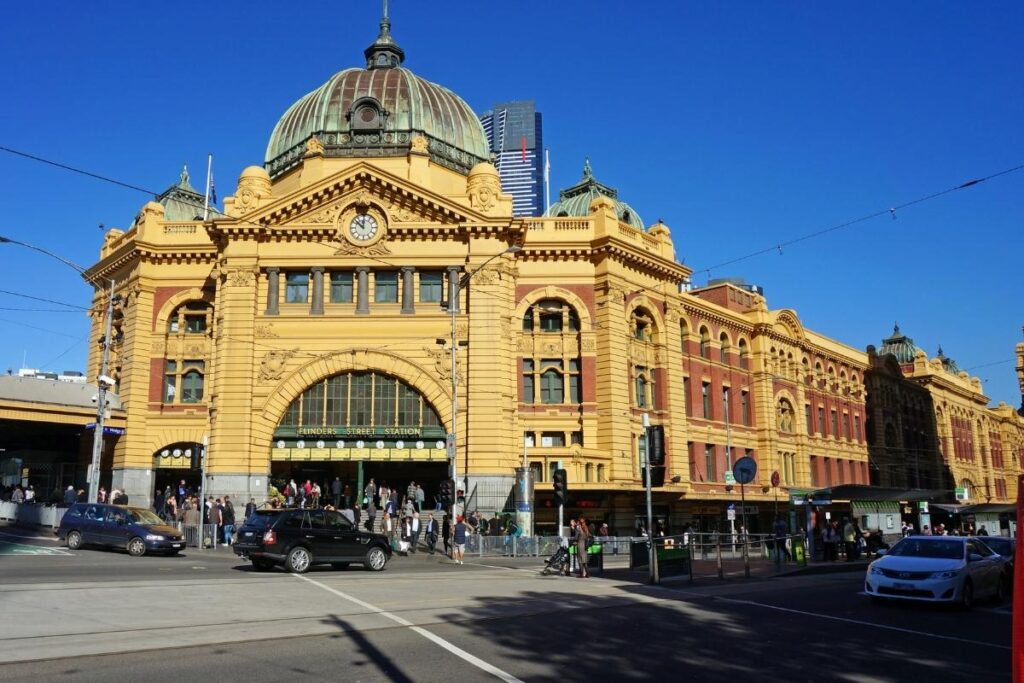
Getting around Melbourne
You can travel around Melbourne in multiple ways. Depending on how much time you have, your budget and where you want to visit, the easiest ways to travel around Melbourne are by rental car, tram, train or bus.
Tram is the most popular way to get around Melbourne. Public transport in Melbourne is quick, easy and reliable. But, like any other city, you can get around on foot, bike, tram, train or bus.
🚋 TRAM: Trams are the main way of getting around Melbourne.
If you have a Myki card, your travel will be capped per day (meaning you will not spend over a certain price). You can buy your Myki card in any 7-11 convenience store.
🚃 TRAINS: The main train stations in Melbourne are Flinders Street and Southern Cross.
Flinders Street is similar to Kings Cross, and Southern Cross of Liverpool Street station, due to location and size. Both have train lines going into the suburbs and are reliable ways to get to work out of the city.
🚴 CYCLING: There are bikes for hire all over the city, which are really similar to London’s Santander (Boris) bikes.
Download an app and you can hire and drop off cycles at designated points.
🚕 TAXI: Uber is widely available in Melbourne.
✈️ Getting to the airport can either be done via Uber or the ‘Skybus’ which has multiple pick-up and drop-off locations. This costs about $20 return and takes about an hour from St Kilda. You can book buses around Australia here.
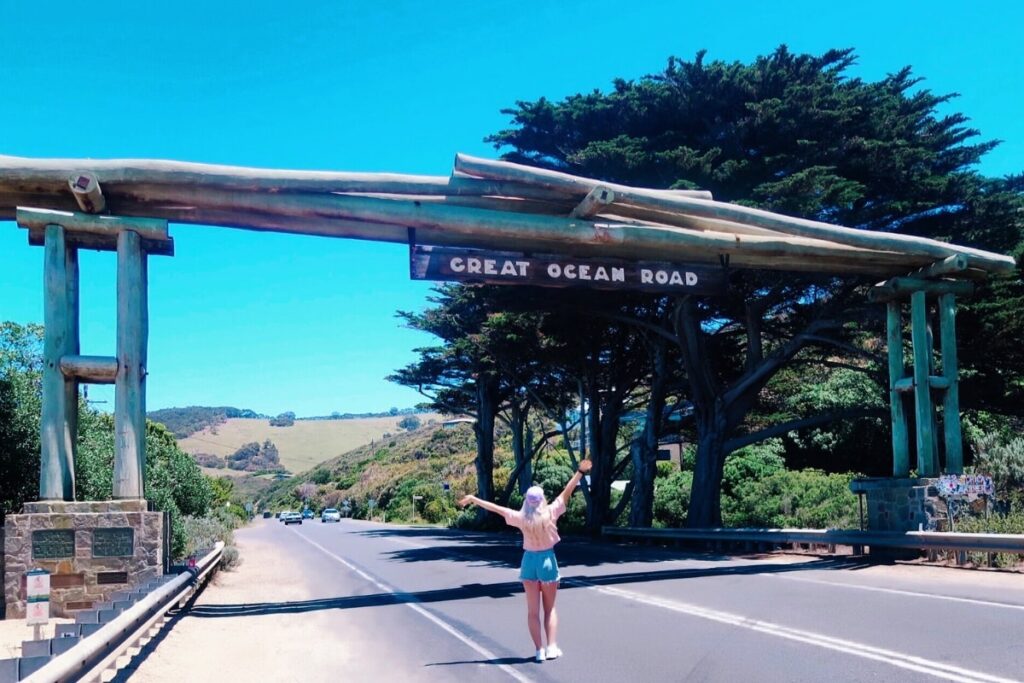
Tips for Moving to Melbourne for the First Time
1. Pick somewhere on a well-connected tram line
Trams are the main form of transport in Melbourne. Buses and trains are available, but they’re often slower and less reliable. Melbourne is known for its good public transport, but some trams have better routes and cover more areas than others.
2. Know your budget
Certain areas in Melbourne are more expensive than others. Just like London, or any other major city in the UK, Melbourne has suburbs that drastically range in price. They also vary in personality, safety, transport links, lifestyle and amenities.
Know your budget before you start looking. It’s important to bear in mind that rent in Australia is calculated by week, rather than by month.
Room shares are cheaper, but if you’re not happy sharing a bathroom and kitchen with a group of other people, it’s not going to be for you. Decide on a budget and what type of accommodation you’re happy with.
🇦🇺 Related post: If you’re moving to Melbourne on a working holiday visa, check out my detailed guide about the costs of living, costs of rent, and how much money you actually need to live in Melbourne.
3. Get a job before you start applying for rented accommodation
It’s a lot easier to find a place to live in Melbourne if you already have a job. Having a job shows you have a guaranteed way of paying your rent, which most landlords will insist on (and simply won’t allow you to rent beforehand).
If you’re really struggling to find a job but want to rent, it is possible but may take a little longer to secure. Showing enough money in your savings to cover at least six months of rent can help if you’re unemployed.
References from previous employers can prove you’re trustworthy and persuade landlords to bend the rules a little. But finding this kind of landlord is rare, so I’d recommend getting a job first if possible!
4. Complete your 1Form as soon as possible
Moving into a rental in Australia can be competitive, especially with the open houses you’ll be attending! You’ll need to act fast and be ready to bid as soon as you’ve found the place you like.
A 1Form collects your personal information and discloses it in a safe and easy way to the relevant real estate agents or property managers. This means there’s no need to fill in repetitive forms for various people as we do here in the UK. Spend some time filling in your 1Form before applying.
5. Get to know different areas in Melbourne
Before you move to a new city, you’ll be told about the ‘best’ areas and where you should live. Try not to let other people make up your mind for you. What you look for in a city may be different to what your friend looks for.
You won’t be able to tell the vibe of a place before you experience it for yourself. Visit the area, go out for drinks, visit the cafes, and take a walk. And most importantly, check out the transport links!
Listen to your gut and your initial feel for the area. Does it feel right for you? Does it feel like somewhere you could live and be happy? Take some time working the areas in Melbourne that suit you and your personality.
🇦🇺 Related post: If you’re moving to Melbourne on a working holiday visa, check out my detailed guide about the costs of living, costs of rent, and how much money you actually need to live in Melbourne.

Volunteering or house-sitting in Australia
The most budget-friendly options for staying in Melbourne on a budget include either volunteering or pet-sitting. Both of these options will give you free accommodation in return for your services. So, how do you find these opportunities?
🥕 Volunteering: Use Worldpackers. They’re a trusted site with volunteering opportunities all over the world. You can choose the job you do, how long for and how many hours you work per day. Check out Worldpackers opportunities here! (Plus my link gets you $10 off your membership!)
🐈 House or pet-sitting: Use Trusted Housesitters. We have used this company all over the world in exchange for free accommodation. Use the website to find a suitable house sit for you (dogs, cats, lizards, chickens), set the dates you’ll be there and how long for, and apply for a sit!
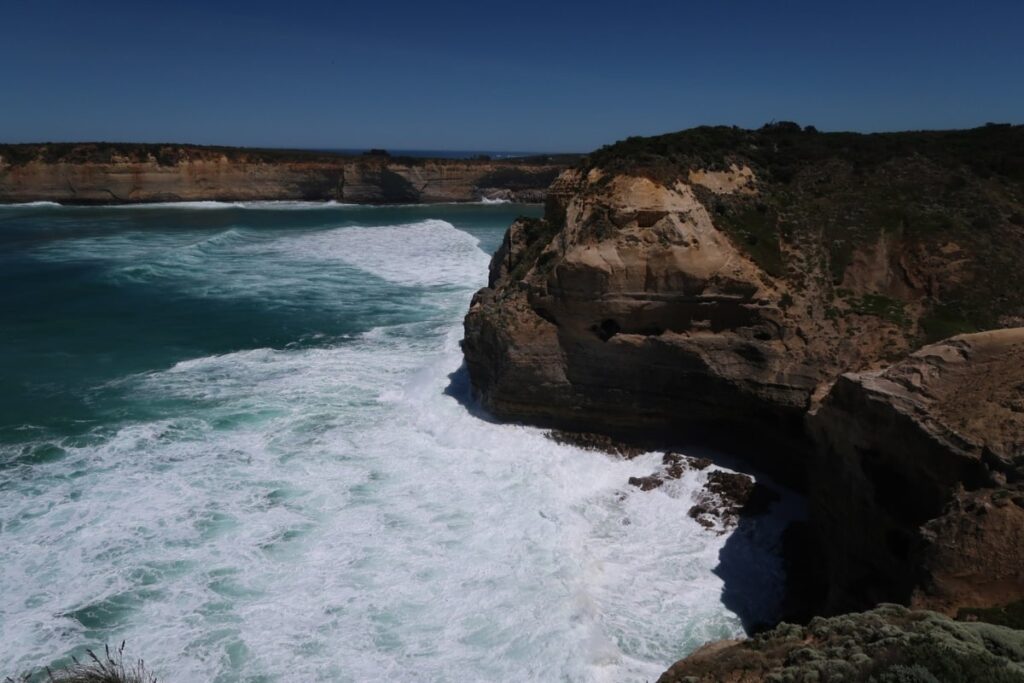
Bucket list tours to do in Melbourne
Looking to book a tour in Melbourne? Tours are one of the best ways to see the hidden gems of the country you are visiting. If you’re travelling during peak season, I highly recommend pre-booking your tours to ensure you don’t miss out!
When travelling, we use this company to book our tours. Tours include skip-the-line tickets to the world’s most iconic attractions, walking tours by top local experts, immersive food and beverage tours, cooking and craft classes, bucket list experiences, and niche offerings you won’t find anywhere else!
Some of the best tours in Melbourne include:
- Great Ocean Road + Wildlife Tour: check prices now!
- Penguin + Koala Bear Tour: check prices now!
- Watch a Melbourne AFL Game: check prices now!
- Yarra Valley Vineyard: Chocolate, Wine and Gin Tour!: check prices now!
➡ Check out more tours for your trip here!
Best Places to Live in Melbourne: FAQs
1) Where is the safest place to live in Melbourne?
In general, Melbourne is a safe city to live in. All of the areas listed in this post are safe, welcoming and friendly areas to live in. Whilst living in Melbourne myself, there wasn’t a single time I felt unsafe, even whilst on public transport or alone at night.
🏡 Related post: Moving to a new city? Check out my solo female safety tips here.
2) What is the best area to live in Melbourne?
For beaches, anywhere from Brighton to St Kilda. If you want city life, the CBD, South Yarra, Brunswick, South Melbourne or Port Melbourne might be for you. Or for nightlife, I suggest anywhere around the Chapel Street area.
Research and visit each individual area in Melbourne before committing to moving to one!
3) Is renting in Australia the same as in the UK?
Renting a property in Melbourne is similar to the UK, but we found more listings had shorter lease terms and there were more rolling contracts.
Showings are often held as open houses, where up to 20-30 people can go and view the rental at the same time. It can get competitive!
We ended up finding our place on Facebook (sounds strange, I know) but it worked perfectly for us. We were travelling quite often whilst we lived in Melbourne, so we didn’t want to be tied down with any leases or agreements. Our rent was cheap, and we were in a monthly rolling contract that we could leave at any time. You can check out the Fairy Floss Facebook group here if you’re looking to do the same!
🇦🇺 Related post: If you’re moving to Melbourne on a working holiday visa, check out my detailed guide about how we found our first rented apartment (and how you can too).
4) Do I need a car to travel around Australia?
This is down to personal preference. We found Australia easy enough to travel around via buses, trains and even flying, but our favourite mode of transport was hiring a car.
You can hire a car and drive around the entire country at your own pace. Driving in Australia is safe and straightforward. Some of the main towns and cities are a distance away from each other, so to maximise your time in the country, you may want to hire a car.
If you’re looking to hire a car in Australia, we rent our cars from this company. They’re reliable, cheap and have car rentals all over the world! ➡ You can check out the prices for car hire in Australia now!
5) Do I need a SIM card to travel around Oceania?
Yes, it’s worth downloading an eSIM on your phone to ensure you can use it for directions and avoid roaming charges as soon as you arrive in either Australia or New Zealand.
ESIMs are easy to download and ready to use within a few minutes of purchasing, so there’s no longer a need to hunt down free Wifi! ➡ You can check out the prices and packages for eSIMs here!
Best places to live in Melbourne: In a Nutshell
Ultimately, wherever you choose to live in Melbourne will be an amazing experience. It’s one of the best cities in the world for young adults and those on a working holiday visa!
So, there you have it! Everything you need to know about the best areas and neighbourhoods to live in in Melbourne. When you’re planning a trip to Australia, make sure you let me know over on Instagram or in the comments below!
If you haven’t seen my blog before, I write posts aimed at first-time backpackers on a budget. I’m currently travelling around the world with my boyfriend (read more here!), creating guides and itineraries for you to follow in our footsteps!
Keep an eye out for more Australian content, all written from a personal and realistic point of view. You can sign up for my newsletter and juicy travel updates here!
As always, thanks for reading and supporting the blog!
Happy travelling 🙂
Jennie x
🇦🇺 🦘Where to next?
- Living In Melbourne As An Expat On A Working Holiday Visa
- 10 Fun Things To Do in Melbourne Solo (+ 20 Extras!)
📍 LIKE THIS POST? PIN IT FOR LATER! 📍
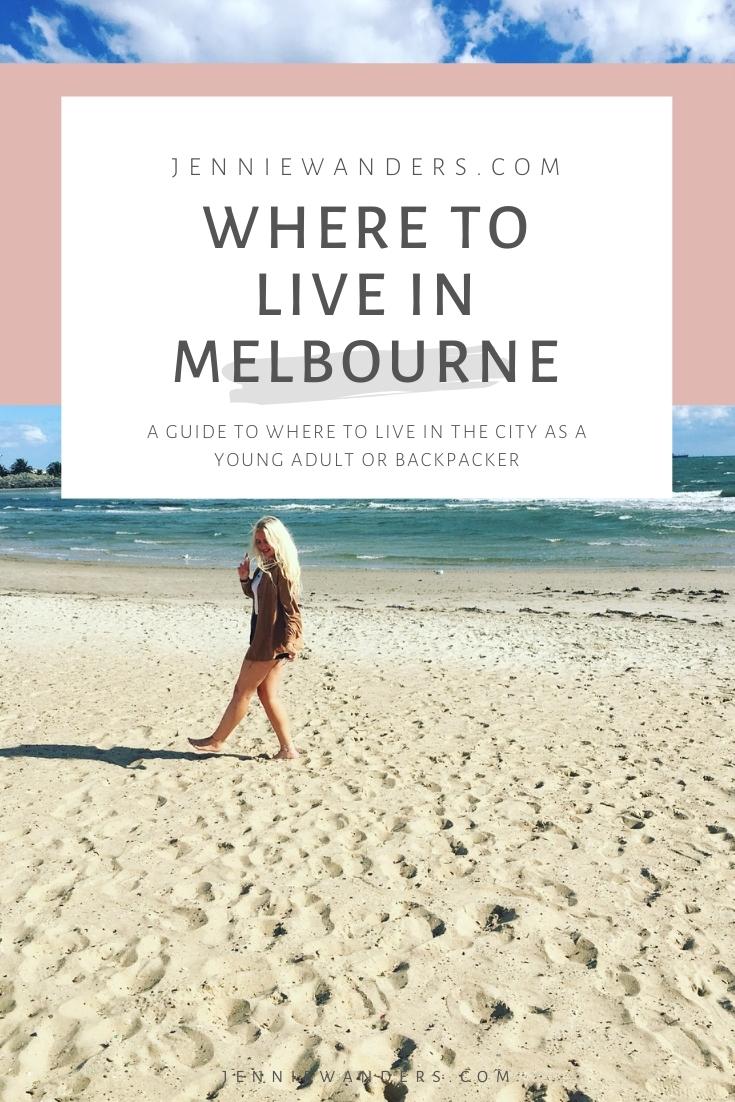
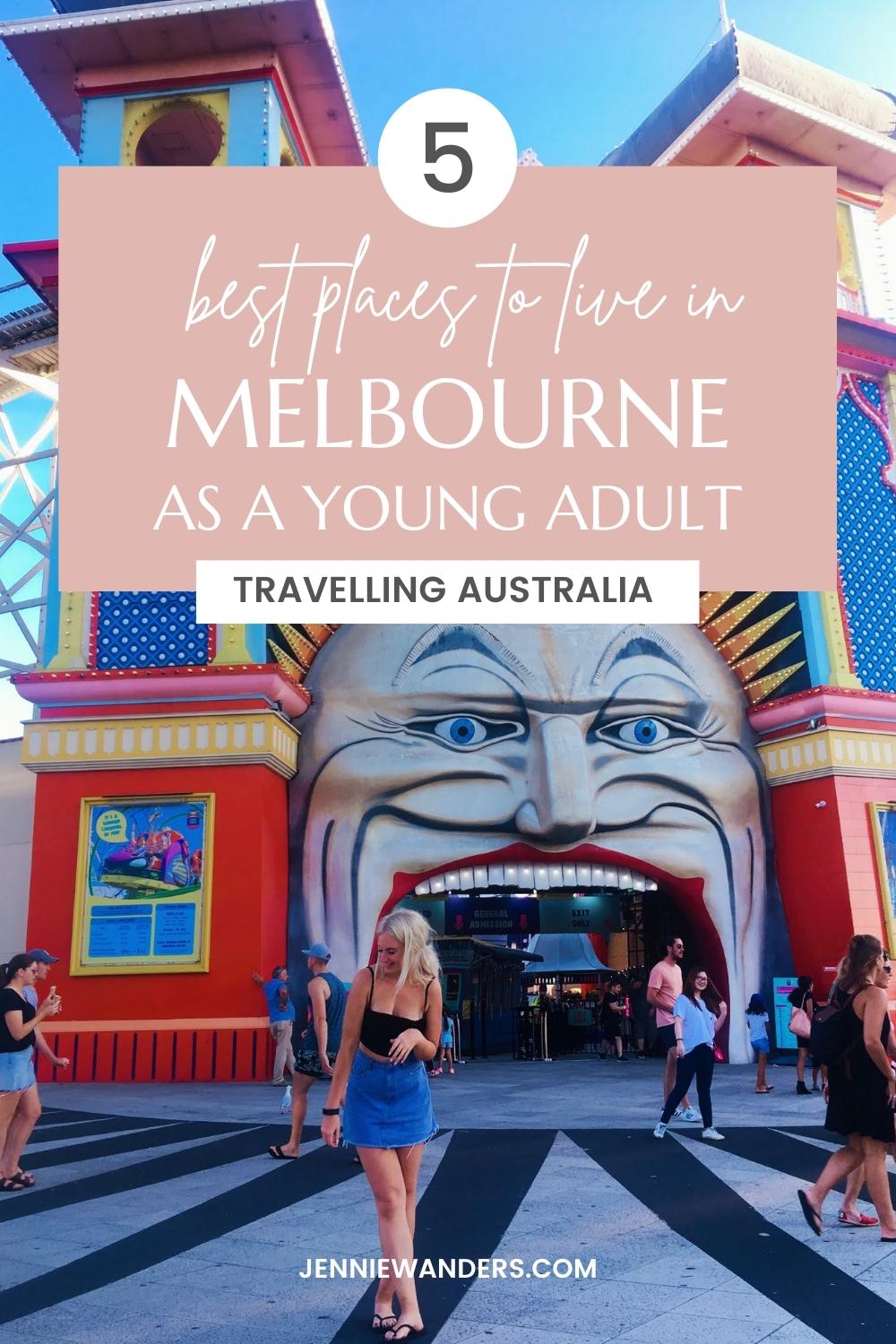
MEET THE AUTHOR!

Hi! I'm Jennie! As a part-time travel blogger based in London, I'm using my 10+ years of travel expertise to encourage & inspire you to step out of your comfort zone through sustainable, mindful and purposeful travel.
If I'm not writing, I'm either reading, drinking coffee or taking a wild swim (all at the same time if I'm feeling impressive).
